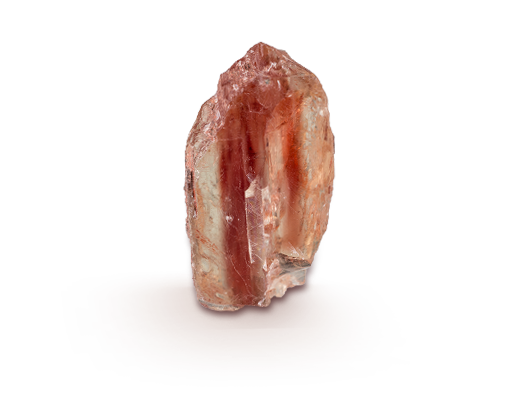OVERVIEW
Sunstone is a member of the feldspar group. Both the orthoclase and the plagioclase feldspar species boast a sunstone variety. Other feldspar group gems include moonstone, non-phenomenal orthoclase, phenomenal and non-phenomenal labradorite, and amazonite. Sunstone from Oregon is gaining attention as a natural and untreated product of the United States.
Gem connoisseurs and innovative jewelry designers often seek the subtle beauty of lesser-known—but still intriguing and unique—gemstones. Some of those are members of the feldspar group.
The feldspar group’s wide variety of unusual gems includes moonstone, non-phenomenal orthoclase, phenomenal and non-phenomenal labradorite, sunstone, and amazonite. Of these feldspars, moonstone is a constant favorite, while sunstone from Oregon is gaining attention as a natural and untreated product of the United States.
Although sunstone and moonstone are both members of the feldspar group, the resemblance stops there. While cool moonstone’s phenomenal varieties offer a soft and gentle adularescent glow, warm sunstone’s phenomenal varieties show a distinct and lively glitter called aventurescence. Aventurescence is a sparkly, metallic-looking luster caused by flat, reflective inclusions, sometimes called “schiller” by sunstone fanciers.
The feldspar group has many members. Some are suitable for jewelry use, some aren’t. Members of the feldspar group vary slightly in chemical composition, and those variations produce a variety of gemstones that differ widely in appearance.
There are two main branches of the feldspar family tree—feldspars that contain potassium and feldspars that contain a mixture of calcium and sodium.
Two species of feldspars contain potassium. These are orthoclase, which includes the gem varieties moonstone and orthoclase sunstone; and microcline, which includes the gem variety amazonite. A non-phenomenal form of orthoclase feldspar appears in jewelry on rare occasions. Sometimes faceted, its hue is usually a transparent yellow.
Plagioclase feldspars contain a mixture of calcium and sodium, and they have slightly different compositions. The gem species in this feldspar family include labradorite and oligoclase.
Not all feldspars that bear the name “sunstone” are from the same side of the feldspar family—both the orthoclase and the plagioclase species boast a sunstone feldspar variety. The name sunstone refers to the gem’s appearance rather than to its chemical makeup.
There are many sunstone varieties. If aventurescence is present, gemologists call it aventurine feldspar. The aventurine feldspar from India has a red-brown bodycolor and sunny glitter. It’s perhaps the best-known sunstone variety, but that situation has been changing.
- Mineral: Feldspar
- Chemical composition: Orthoclase – KAlSi3O8
- Oligoclase and labradorite – solid solution between NaAlSi3O8 and CaAl2Si2O8
- Color: Yellow, green, red, red-brown, colorless
- Refractive Index: Orthoclase sunstone – 1.518 to 1.526
- Refractive Index: Oligoclase sunstone – 1.537 to 1.547
- Refractive Index: Labradorite sunstone – 1.559 to 1.568
- Birefringence: Orthoclase – 0.005 to 0.008
- Birefringence: Oligoclase and labradorite – 0.007 to 0.010
- Specific gravity: Orthoclase – 2.58
- Specific gravity: Oligoclase – 2.65
- Specific gravity: Labradorite – 2.70
- Mohs hardness: 6.0 – 7.2
BIRTHSTONE
SUN STONE isn’t a birthstone.
HISTORY
In the early 1800s sunstone was a little-known, rare, and costly gemstone. It wasn’t until finds in Norway, Siberia, and other parts of the world that sunstone became somewhat more widely recognized, more available, and less expensive. In the US state of Oregon in the early 1900s, there were reports of sunstone finds in ancient lava fields in a desert area called Warner Valley. Even earlier, Native Americans in that area might have been the first collectors of Warner Valley sunstones.
According to Native American legend, the blood of a great warrior – wounded by an arrow – dropped onto pieces of Oregon sunstone. The blood carried his warrior spirit into the stones, coloring them with shades of red and giving them sacred power. A museum in Jacksonville, Oregon, includes sunstones in its display of Indian artifacts. In Oregon today, several mining claims produce enough of this unique material to supply mass marketers as well as carvers and high-end jewelry designers.
Source of Content : www.gia.edu


